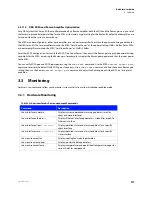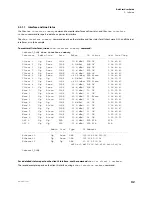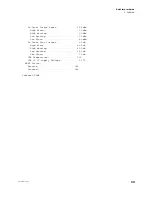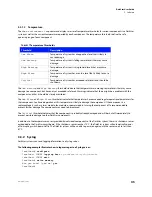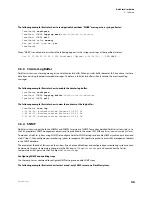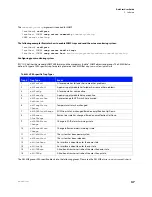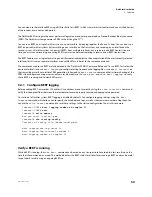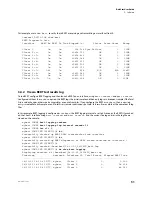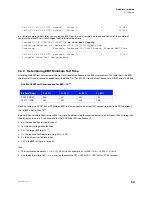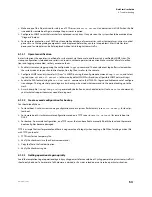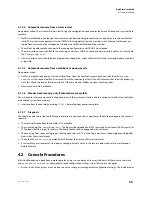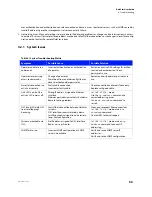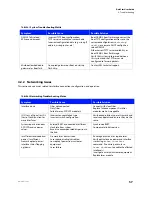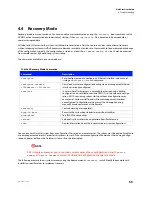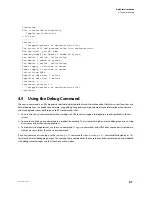
54
DarkStar User Guide
4: Troubleshooting
www.xkl.com
•
Make a copy of this file, archived for safety on a TFTP server (use
write network
) and accessed via DHCP when this file
is needed for remote boot. Again, manage the passwords required.
•
Configure an SNMP server that watches for unplanned restart traps. If any are seen, the system should be examined (see
“Diagnosis” below).
•
For long-term prevention, use SNMP input to compile a database of wear metrics, such as temperatures, currents, optical
power, etc., so that degrading components can be replaced before they can turn into problems. Most DarkStar laser,
power, and fan modules can be field-replaced without disturbing customer traffic.
4.1.2.1 Operator notification
In most situations, the operator is notified of a system event via the console, and the restart is notified by SNMP traps. The
startup configuration is reloaded and restart is automatic, without operator intervention. Make sure that all useful notifica-
tions and logging are enabled, so that you receive them:
•
Enable system event logging using the config mode
logging
command. The console event log buffer is cleared when
the system reloads, so you should direct output to a log file as well as to the console.
•
Configure SNMP to send system alerts (“traps” in SNMP) by using the config mode command
snmp-server
, and select-
ing trap types
xkl
and
xkl-generic
(otherwise, by default, SNMP will send you all possible SNMP network traps).
•
Enable the AAA feature (using the
aaa new-model
command) so that logs an auditable account of configura-
tion changes. The log may help your diagnosis by showing who issued what commands in the period leading up to the
crash.
•
A crash dump file (
/dump/dump.exe
) is generated by default on an unscheduled restart (not on a
reload
command);
your technical support team may need it for diagnosis.
4.1.2.2 Create a saved configuration for backup
You should ideally have:
•
For local boot. A valid, current running configuration saved in system flash memory (use
write memory
), for local sys-
tem boot.
•
For remote boot. A similar accurate configuration saved on a TFTP server (use
write network
) for remote boot via
DHCP.
•
For backup. An accurate configuration, on a TFTP server, that can be called in manually if both the local and the remote
boot config files become damaged.
TFTP is a simple file transfer protocol and there is no guarantee of integrity when copying a file. When fetching a critical file
with TFTP, you should:
•
TFTP transfer to a temporary file.
•
Verify the checksums (use the checksum command).
•
Copy the file to the final destination.
•
Verify the checksums again.
4.1.2.3 Getting operational again quickly
Avoid the temptation to get operational again by cycling power to force a cold boot. Cycling power disrupts customer traffic. It
should only be done if a hard reset of all hardware is desired, or if a warm reload does not resolve a particular situation.
Содержание DarkStar DRA
Страница 1: ...DarkStar Lightingthepathtonetworkindependence UserGuidev3 1...
Страница 11: ...x www xkl com CHAPTERS...
Страница 72: ...50103 50003 10...


